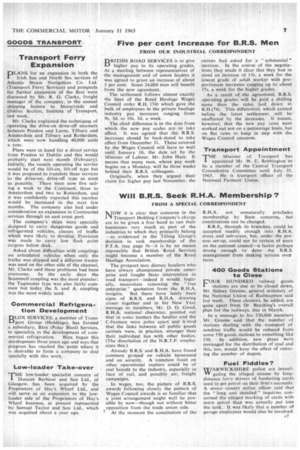Transport Ferry . Expansion
Page 9

If you've noticed an error in this article please click here to report it so we can fix it.
PLANS for an expansion in both the Irish Sea and North Sea services of Atlantic Stearn Navigation Co. Ltd. (Transport Ferry Services) and prospects for further expansion of the fleet were discussed by Mr. R. G. Clarke, freight manager of the company, in the annual shipping lecture to Merseyside and District Section, Institute of Transport, last week.
Mr. Clarke explained the techniques of operating the drive-on drive-off steamers between Preston and Larne, Tilbury and Amsterdam and Tilbury and Rotterdam, which were now handling 40,000 units a year.
Plans were in hand for a direct service from Preston to Dublin and this would probably start next month (February). Initially, the vessels operating the service would be of the lift-on, lift-off type but it was proposed to translate these services to the drive-on, drive-off type as soon as possible. There were now five sailing a week to the Continent, three to Amsterdam and two to Rotterdam, and it was confidently expected this number would be increased in the next few months. The company also had under consideration an expansion in Continental services through an east coast port.
The company's ships were specially designed to carry dangerous goods and refrigerated vehicles, classes of traffic which were likely to develop. Provision was made to carry low flash point cargoes below deck.
Asked about difficulties with couplings on articulated vehicles when only the trailer was shipped and a different tractor was used on the other side of the channel, Mr. Clarke said these problems had been overcome. In the early days the Scammell coupling was the most popular; the Tugmaster type was also fairly common but today the S. and A. coupling was the most widely used.
















































































































